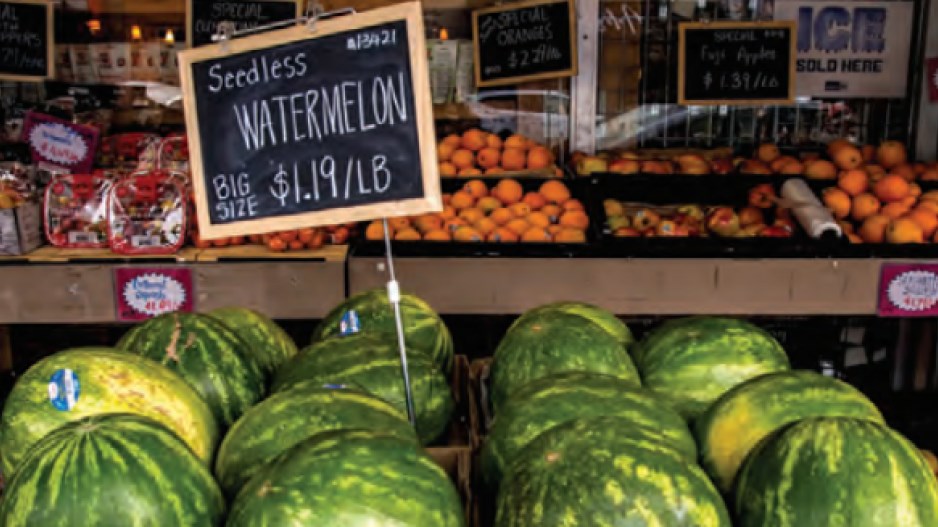While food security has been increasingly discussed as environmental concerns mount over the last few years, a new threat – global supply chain snarls – is now entering the equation.
The increased attention on the issue comes as the United Nations’ Food and Agricultural Organization (FAO) Food Price Index breached 160 points for the first time in history in March. April numbers fell only slightly to 158.8 points while sugar, meat and dairy prices continue to rise globally.
And while prices for commodities like cereal and vegetable oil fell in April, the slide comes after a sharp spike to record highs in March. The small decline last month did little to alleviate the situation where 2022 prices continue to be “markedly above … year-earlier levels,” according to the FAO’s latest report.
The FAO Food Price Index for April 2022 is 29.8 per cent above the same period in 2021. Observers have largely placed the blame for the high food prices on the Russian invasion of Ukraine. The attacks have not only taken large agricultural production off the global table, but have also indirectly caused prices of items like fertilizer and energy needed for production elsewhere to skyrocket.
While none of the shortages seen in other places should affect availability of things like wheat in a major surplus producer like Canada, it does not mean we’ll escape unscathed, said James Vercammen, a food and resources economics professor at the University of British Columbia.
“We produce way, way more wheat than we consume, and we export the vast majority of what we produce,” Vercammen said. “But we’re going to have to pay what the global price is. So it doesn’t matter if we’re self-sufficient; we’re going to still pay now over $10 a bushel, which is well over double than what we did.
“Yes, there’s going to be wheat to eat, but it’s the affordability that’s the real issue.”
Archie Norman, chairman of British retail giant Marks and Spencer Group plc (LON:MKS), said earlier this month that food prices in stores may jump by as much as 10 per cent in 2022.
Canada does benefit from protection in some sectors such as dairy and poultry, where supply management is the industry norm. That means that the production and supply of items such as milk and chicken are carefully handled by the industry to prevent too much price impact from what happens elsewhere.
But not all Canadian agricultural sectors work that way.
One major import area is fruit. Canada’s colder climate means it depends on foreign production of bananas, watermelons, apples, oranges, strawberries and pineapples.
Many of these commodities are sourced from Latin American countries. The same principle goes for items such as coffee from Brazil and select seafood from Vietnam or South Korea.
And even as Canada is known for being a major producer of fresh vegetables, goods with high demand among Canadian consumers must still be imported. That’s often because economies of scale offer cheaper production in markets like the United States (potatoes, lettuce and cauliflower); Mexico (tomatoes, onions and peppers); and China (kale).
“That is where we are vulnerable,” Vercammen said, referring to cross-border supply chains running into bottlenecks.
“Instead of growing more of it ourselves, we tend to import it from California because the big stores want to deal with trucks coming in from California loaded with fresh produce, rather than dealing locally because it’s more seasonal.”
He said this makes it more cost-efficient to engage with California – at the expense of Canada’s self-sufficiency.
According to the U.S. International Trade Administration, more than 80 per cent of fresh fruit in Canada comes from another country. American exports make up 40 per cent of that.
While prices will continue to rise, there is no imminent risk to supply, Vercammen said.
He added that the supply chain globally has impressively survived transportation barriers brought on by the COVID-19 pandemic in 2020. That alone gives Vercammen some confidence that actual supply would not suffer in most sectors in the short term.
But global climate concerns mean Canada could face some supply upheaval if production in places like California is disrupted.
“They’ve just had a drought situation and one can imagine different scenarios where they simply say, ‘Hey, we are really short this year,’” Vercammen said. “So just like us seeing the wheat price skyrocket, we could see the same for something like broccoli and lettuce and everything else we buy. It’s not inconceivable.”
That’s why governments in Canada on both the federal and provincial level should be doing much more to promote “grow local, buy local” campaigns, said Vercammen.
It may also be important, he added, for consumers to approach buying groceries with a different mentality.
Instead of expecting all fruits and vegetables to be available year-round , people should acclimatize themselves to consumption patterns more reflective of local produce cycles while being willing to pay more to support local products.
Vercammen said that would give local farms and growers a chance to compete and sustain themselves outside of relying on farmers’ markets and agricultural tourism while major stores continue to buy bulk from south of the border.
But Vercammen is skeptical that consumer mentality will take root.
“It has been hard to convince people to drive smaller vehicles in the midst of a climate change crisis,” he said. “People want to do more, but they don’t actually act on it … Most probably realize they are buying something not locally produced, but they don’t think about how vulnerable we are.
“I spent a lot of time looking at all the beautiful farmland we have in the Fraser Valley and so much of it is underutilized.” •




